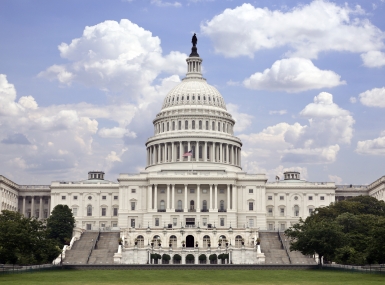Lessons from the Great Recession guided Treasury’s approach to ARP
When the Biden administration assessed the state of the country in the midst of the COVID-19 pandemic, the Great Recession loomed large in the minds of most personnel.
The administration was determined not to repeat the history of an uneven recovery that saw many parts of the United States lag years behind others, if they reached pre-recession conditions at all.
“We understood that it would not be possible unless we provided sufficient support to state and local governments,” Jacob Leibenluft told a July 11 joint meeting of NACo’s Large Urban County Caucus and Rural Action Caucus at the NACo Annual Conference. He is the chief recovery officer and counselor for Treasury Secretary Janet Yellen.
“We needed to provide the resources needed to take on the public health crisis,” he said. “And fiscal distress cannot only result in cutbacks but as a drag in a recovery.”
So, when it came time to allocate the $65.1 billion of the American Rescue Plan’s State and Local Fiscal Recovery Fund that was going to counties, it would be a direct allocation, a departure from the CARES Act’s cutoff of 500,000 residents needed for direct funding.
“We wanted to ensure that those resources went to every government,” Leibenluft said, noting that states would hardly be a better judge of where money was most needed in each county. He noted that he was impressed by the long-term planning he had seen from many counties, along with the data-supported rationale that surrounded how counties allocated their ARP funding. “True community engagement,” he observed.
He encouraged counties to submit comments on the final interim rule on ARP spending by July 16. When asked whether the Treasury Department could relax spending rules to give counties more latitude, Leibenluft pointed to statutory language that demanded those guide rails, and it would take congressional action to allow that, which would be unlikely.
“Those guard rails are there because of what the legislation requires,” he said. “It’s an approach that ensures accountability and transparency. That’s our ‘North Star’ in implementing relief at Treasury.”
The American Rescue Plan is the largest piece of federal spending in American history, but it was allocated with great intentionality. With counties largely still returning their staffing levels to what they maintained before the Great Recession 13 years ago, the funding was meant not only to restore those personnel but also to start to advance.
“There are 77,000 fewer workers in public schools teaching 2 million more students,” Leibenluft said. “Government jobs are still 1 million below the pre-pandemic levels.
“Our hope is that the passage of the ARP will finally allow us to do what most of us who came to govern came for,” to advance the cause of helping citizens.
Attachments
Related News

U.S. Congress passes reconciliation bill: What it means for counties
On July 3, the U.S. Congress passed sweeping budget reconciliation legislation.

U.S. Senate passes amended reconciliation bill text: What it means for counties
On July 1, the U.S. Senate narrowly passed their version of sweeping budget reconciliation legislation.

County Leaders Visit Washington to Share Local Perspective on Budget Reconciliation
Elected officials from five states sound alarm about administrative and funding changes to SNAP and Medicaid.
